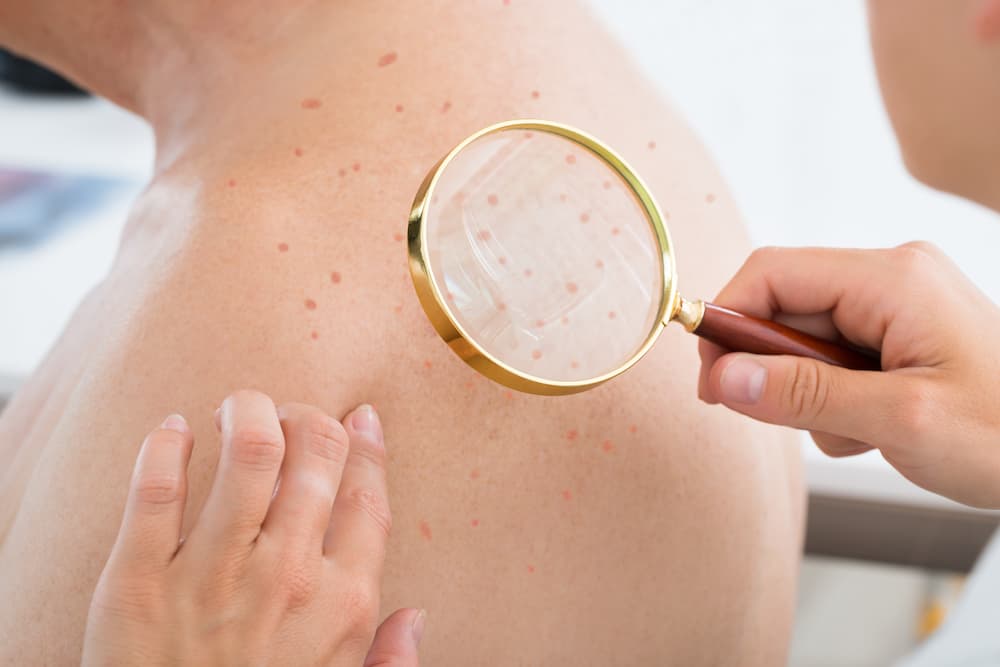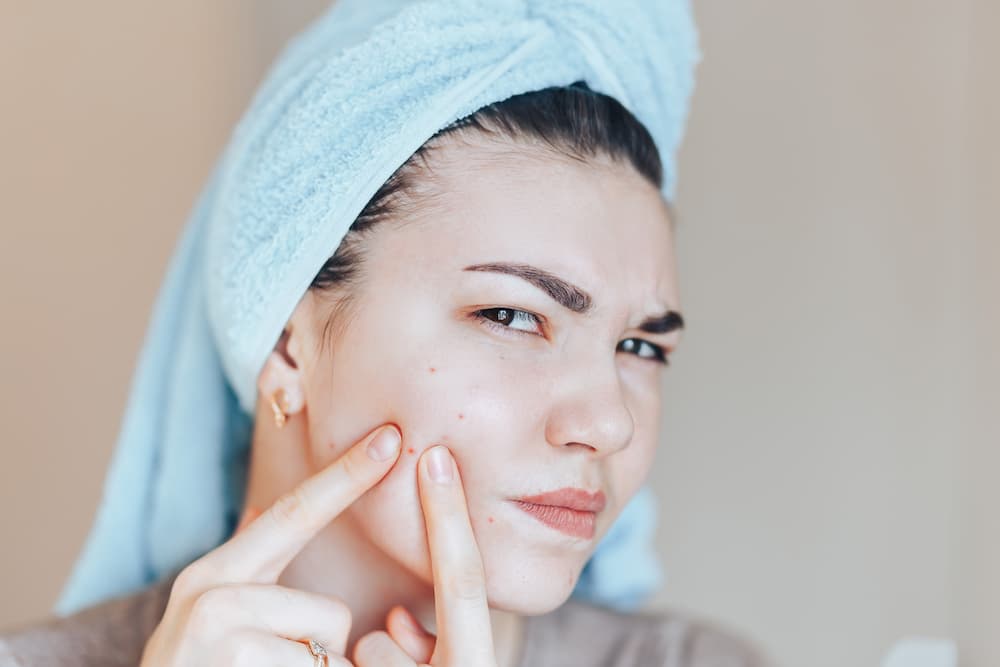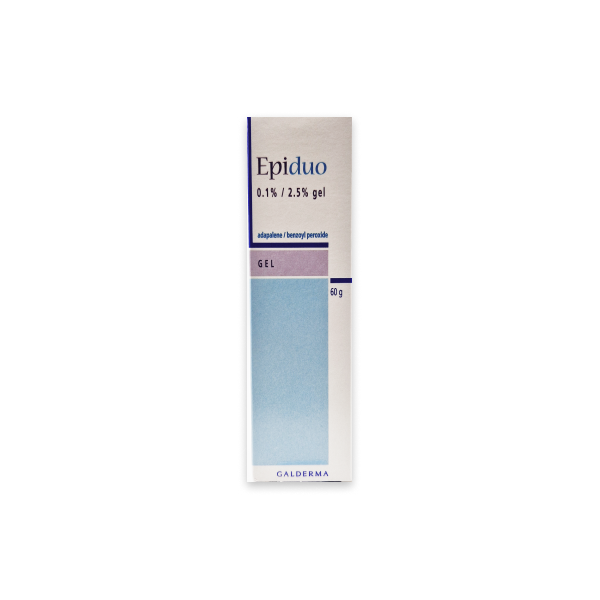
How is acne different for men?
Skincare has become a hot health topic in recent years, with innumerable products, practices, and acne home remedies promising to deliver a spotless glow! Whereas women used to be practically the sole focus of the skincare industry, men are now taking more of an interest than ever. Unfortunately though, regardless of gender, the same common skin conditions afflict us all – and you can’t get more common than acne.
Almost everyone experiences the puberty pain of acne, but a good many of us still carry the condition into our adult years. Although widespread, acne can vary significantly person to person – and yes, acne in men and women can look a little different.
Let’s take a look at the different types of acne, and how they can be treated effectively.

What Causes Acne?
Firstly, you might be wondering what causes acne. After all, there are a lot of common myths about the condition. To be clear, breakouts of acne aren’t caused by bad hygiene, a poor diet, or masturbation! Generally, it comes down to hormones – specifically, androgen hormones.
Androgen hormones can boost your body’s oil production. This excess oil, called sebum, mingles with dead skin cells to form a plug in the follicles. Once plugged, bacteria can begin to contaminate the follicles, leading to inflammation and pus production. It gets grosser! As these androgen hormones also thicken the follicle lining, it becomes nigh impossible to get rid of the blockage by just cleaning the skin. Menstruation and hormone cycles can also affect acne.
What Are The Different Types of Acne?
Acne can present differently, depending on the nature of the follicle. Let’s run down the various kinds of spots you might see.

Blackheads
A plugged follicle that is open to the skin is often called a blackhead. The black or yellowish coloring is produced by the follicle itself – it isn’t a product of trapped dirt.
Whiteheads
Whiteheads are formed when the top of the pore closes up. They will appear as small bumps bulging outwards from the skin, and are typically firmer than blackheads.
Papules
These small red or pink bumps are the result of significant inflammation. They’re caused by breaks in the follicle wall, and often feel tender or sore to the touch.
Pustules
These are similar in form to papules, but contain a build up of pus. As such, you’ll notice them as red, protruding bumps topped with a white or yellow head.
Nodules
Nodules are formed deeper beneath the surface of the skin, and so are harder to get rid of. These irritated and ruptured pores form larger lumps that can be painful.
Cysts
Even further below the surface of the skin are cysts. A combination of sebum, bacteria and dead skin cells, cysts could be said to be the most severe acne spot. They are large red or white bumps that can hurt to touch. Of all acne spots, cysts have the highest likelihood of causing a scar.
Which Type Of Acne Is The Most Severe?
Of the different types of acne, blackheads and whiteheads are regarded as the mildest form. As non-inflammatory spots, they’re the most receptive to standard over-the-counter treatments, such as acnecide.
Inflammatory spots are a bit trickier. Once papules and pustules appear, it can be a sign of moderate acne developing. These will require more specialized treatment, such as antibiotics like lymecycline.
Multiple nodules or cysts can indicate severe acne and will need to be treated with the care of a medical professional.
Where Can Acne Develop?
Acne isn’t exclusive to one region of the body. Unsurprisingly, since your skin is pretty much everywhere, acne can appear all around! That being said, acne does tend to congregate in a few predictable places.
The most common type is facial acne. In fact, practically everybody with the condition will develop spots on the face. This is why moderate to severe acne can be such a pain, as it can affect the most visible part of the body. It can’t really be covered up with clothing except for face masks, although these could cause ‘maskne’ if used incorrectly.
The back is also very common, with just over half of all sufferers developing spots there. A more uncommon region is the chest, with around 15% of people developing acne here.

Can Acne Affect Men And Women Differently?
Acne is typically an equal opportunity skin condition…but not always. After all, it’s primarily caused by hormones, which will vary between men and women. Plus, different routines and habits can exacerbate acne, some of which are more common with one gender than another.
Overall, it seems that women are more likely to have adult acne than men. It’s thought this might be down to the frequency of hormonal changes among women, which can trigger breakouts. Triggers can include:
• Periods
• Pregnancy
• Polycystic Ovary Syndrome
• The progestogen-only pill or contraceptive implant

As a contrast, the combined oral contraceptive pill could help treat acne in women, as could hormonal treatments [1].
There are also potential differences beyond the hormonal. It’s been found that, in some cases, the heavy application of makeup can cause acne [2]. In fact, it even has its own name: Acne cosmetica. Although most cosmetic brands have improved their formulations to avoid this, it can still happen if chemicals from the makeup induce plugs in the follicles. More common among women, acne cosmetica can be avoided by:
• Choosing your makeup carefully, and not using any makeup that has caused spots to develop.
• Washing your face with a mild cleanser.
• Removing your makeup before going to sleep.
• Applying it gently with clean equipment.
Men aren’t immune from skin destructive grooming habits, either. Shaving can cause razor burn, cuts, spots and irritation.
How Can Different Types Of Acne Be Treated?
Whether your acne is mild, moderate or severe will determine the type of treatment you’ll need. This can range from over-the-counter help to making an appointment with a dermatologist.
Gels are a common prescription treatment for acne sufferers. Applied to the affected skin, these gels can help to remove and prevent acne following prolonged use. Often they’ll include antiseptics such as Benzoyl Peroxide, which kills the bacteria responsible for the condition. In addition, they can include retinoids like Adapalene which act as anti-inflammatories. The combination can be really effective.
For mild acne it is usually advised to start of with a Benzoyl Peroxide product such as Acnecide Gel. If your acne is more severe, or if this treatment is ineffective, stronger prescription options exist.
Examples of prescription strength anti-acne gels include Treclin gel, Epiduo gel, Differin gel. These are suitable for oiler skin and contain retinoids and/or antibiotics. You should speak to your GP or dermatologist to decide on the treatment that is best for you.
Other topical treatments include Aknemycin Plus and Zineryt Solution, which include the antibiotic Erythromycin. When applied correctly, antibiotic treatments such as these can effectively inhibit the growth of acne causing bacteria. Of course, pills are available. Both Tetralysal capsules and Lymecycline capsules contain powerful tetracycline antibiotics. Read up on common Lymecycline myths as well as why you should avoid tanning with this treatment!
It is important to note that all these treatments, just like any medication, have the potential for side effects. With many treatments your acne can actually flare up before it gets better, which can take a few weeks. It is important to give the treatment a chance to work and persevere with treatment before you consider changing to an alternative.
Can I Buy Acne Treatments Online?
Prescription treatments for acne, including gels, solutions, and capsules, are all available online from licensed UK pharmacies such as e-Surgery. With next-day delivery available and discreet, recyclable packaging, e-Surgery provides your anti-spot solution at the click of a button.
Sources
- Acne Treatment | NHS
- I Have Acne! Is It Okay To Wear Makeup? | American Academy Of Dermatology Association
Further Reading
- What Men Should Know About Acne | WebMD
- Acne Symptoms | NHS
- Acne Causes | NHS








